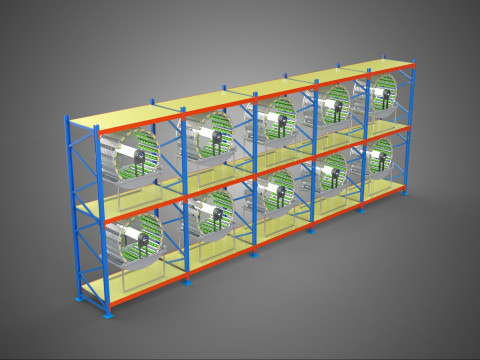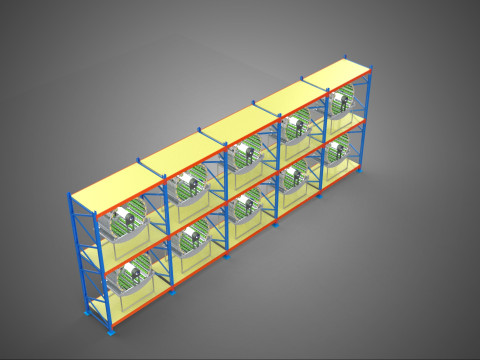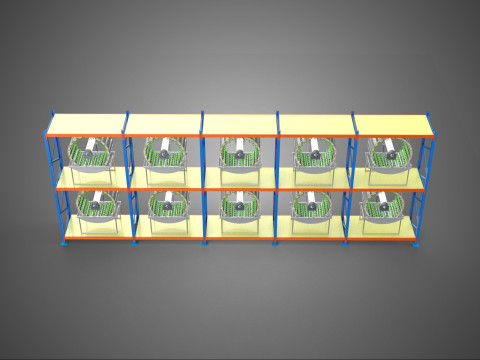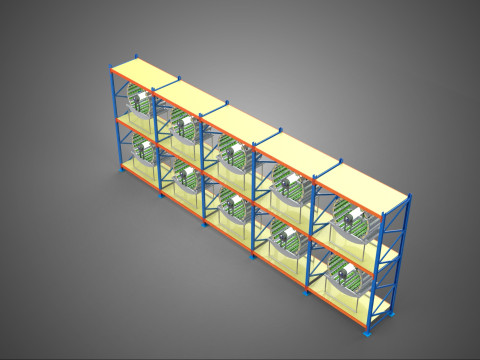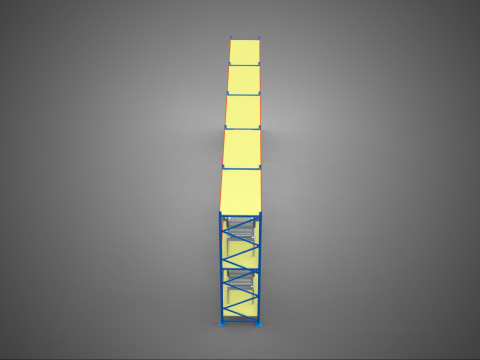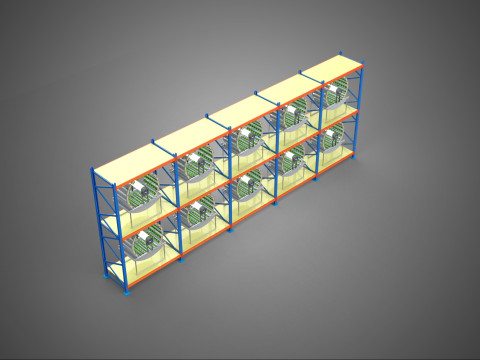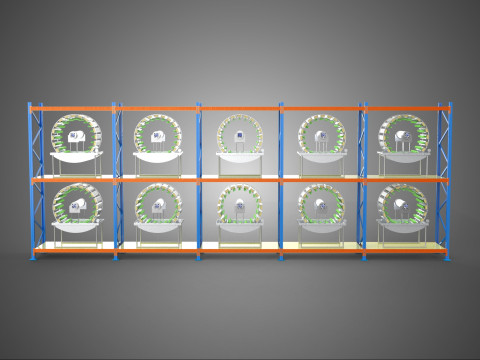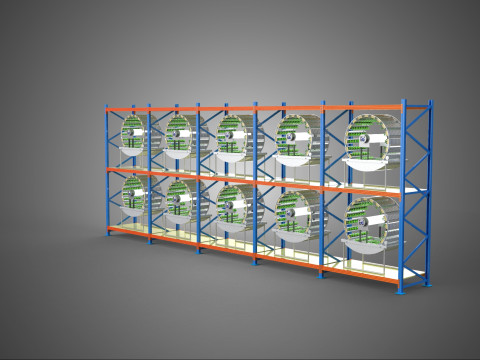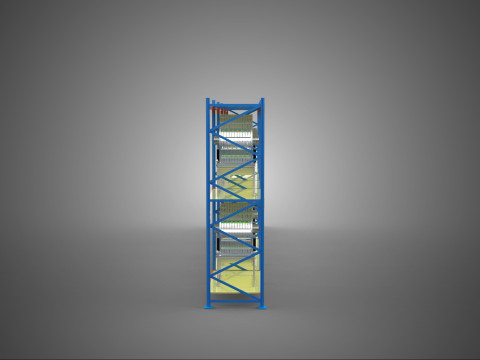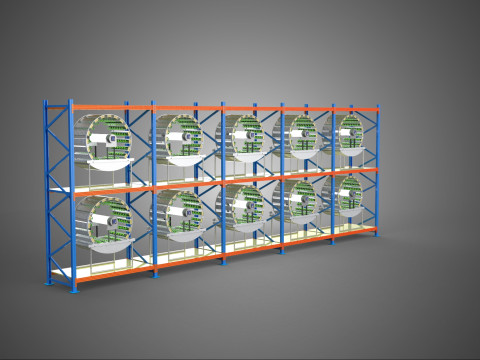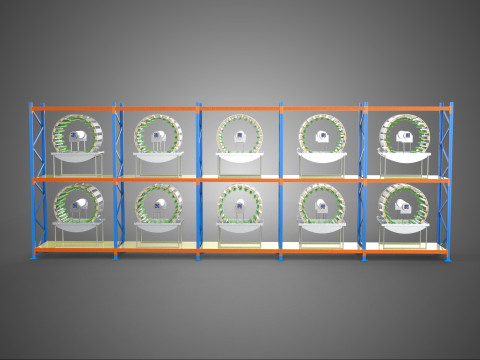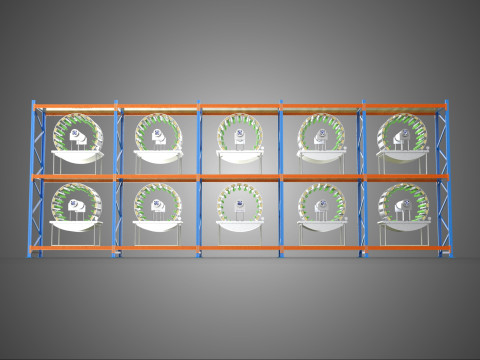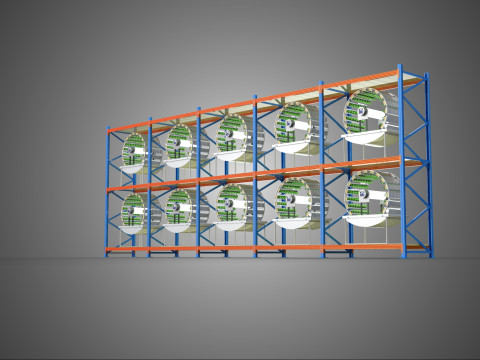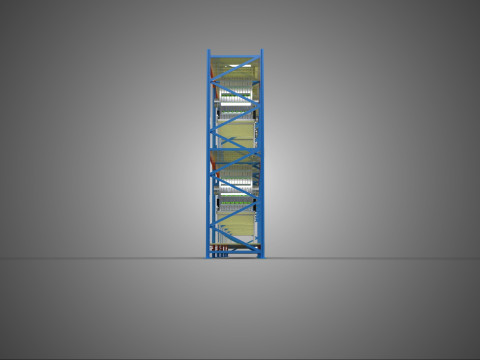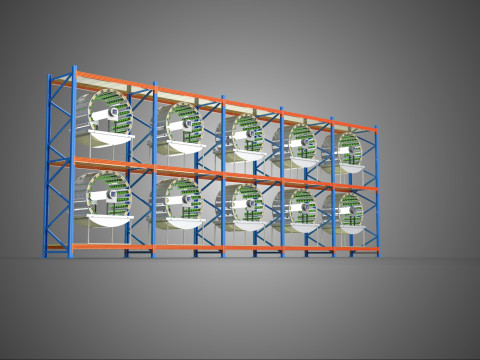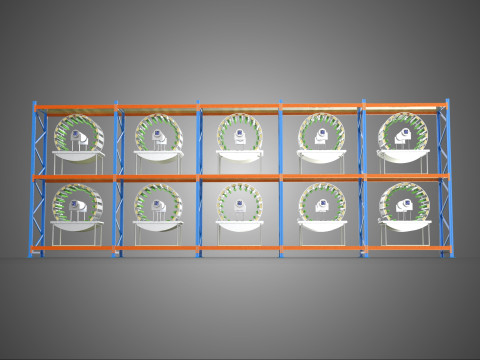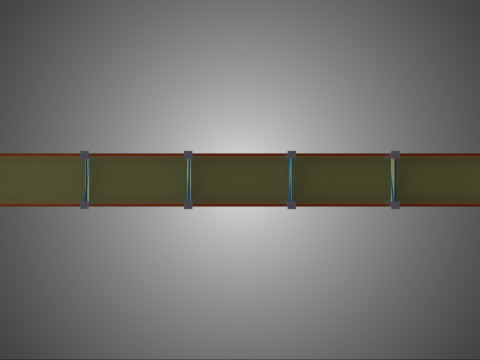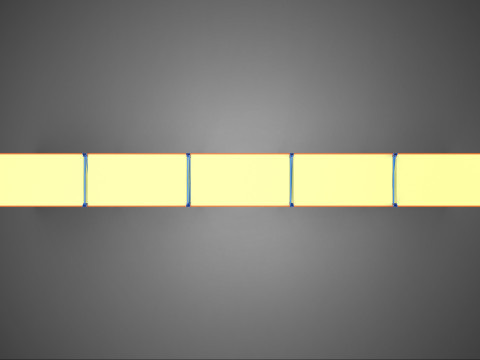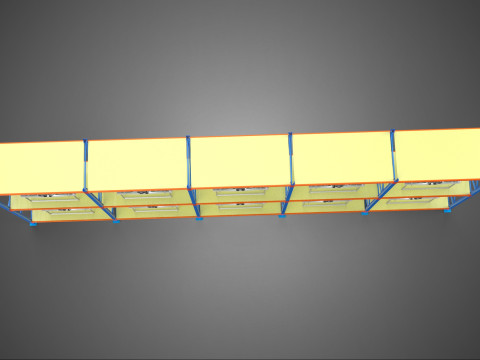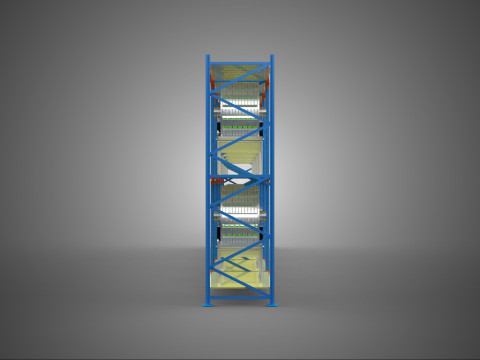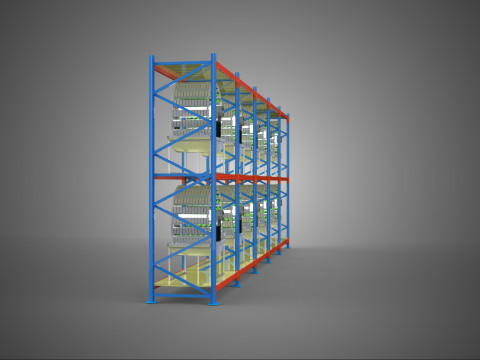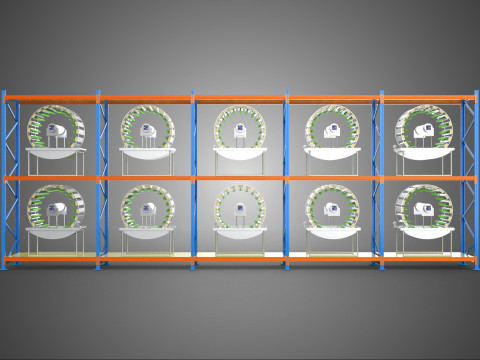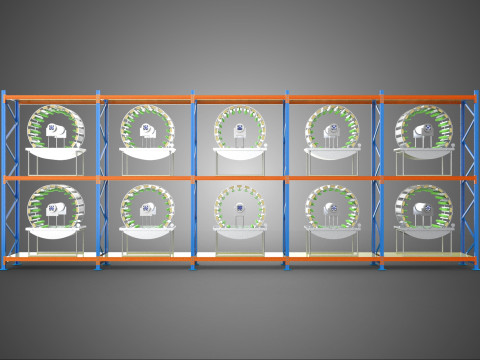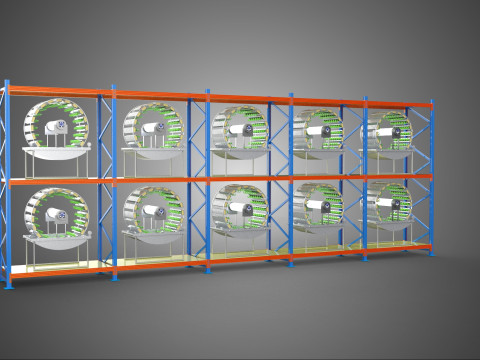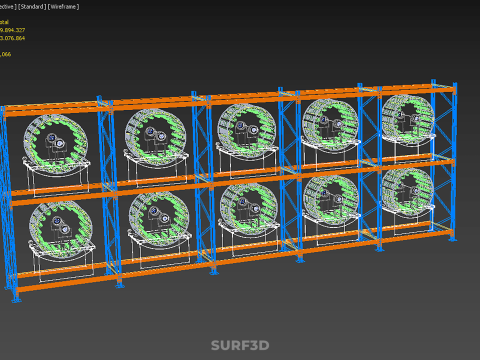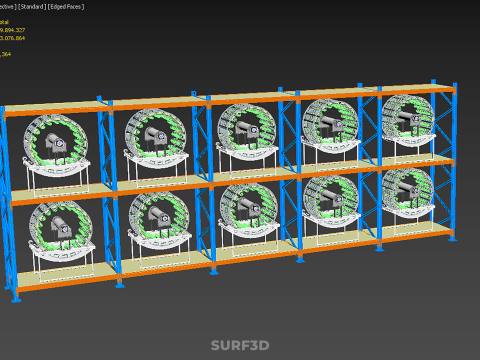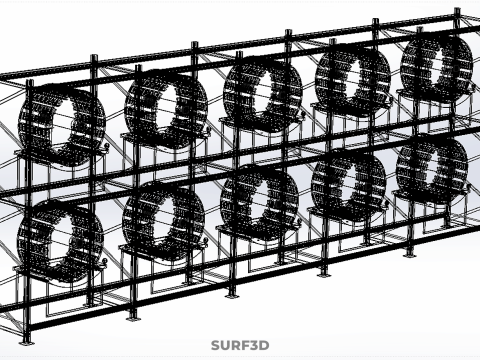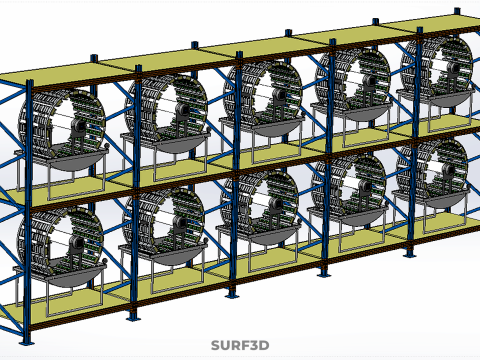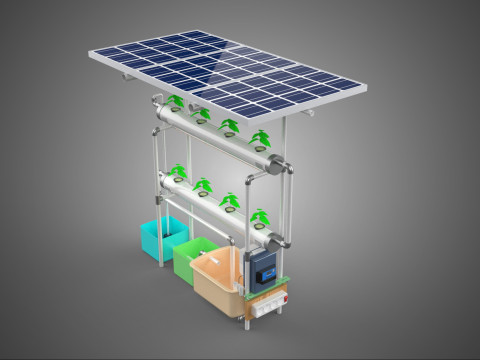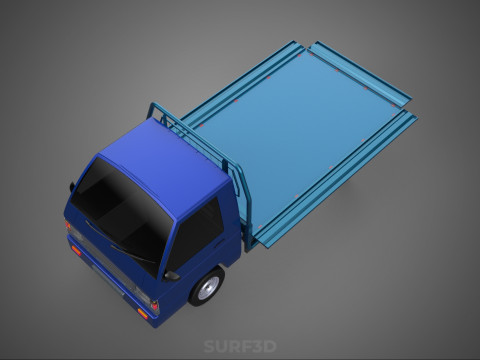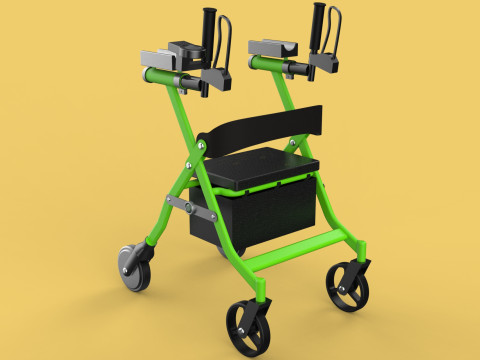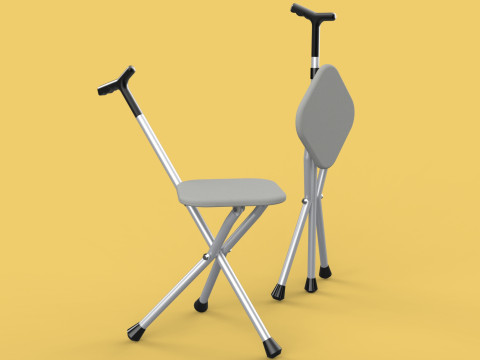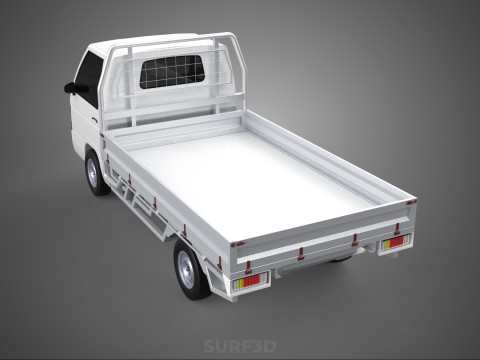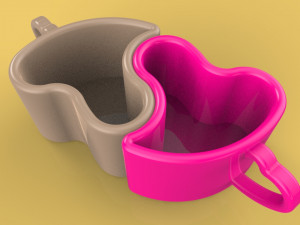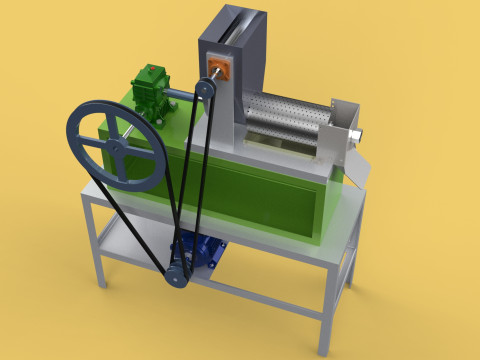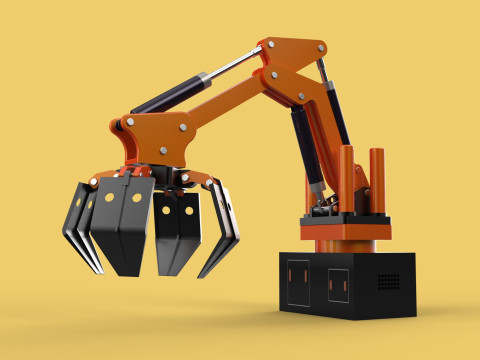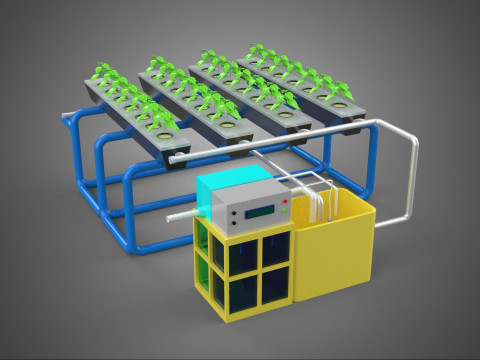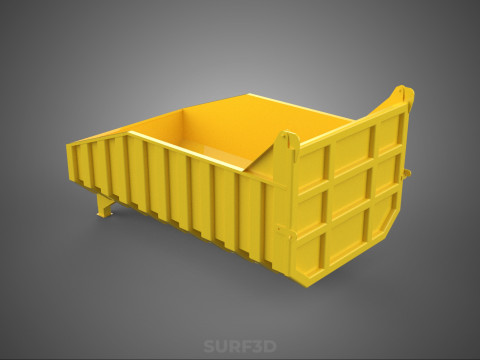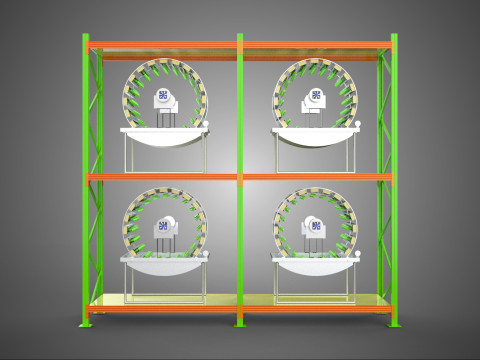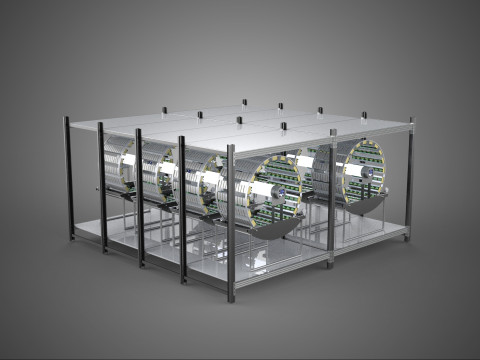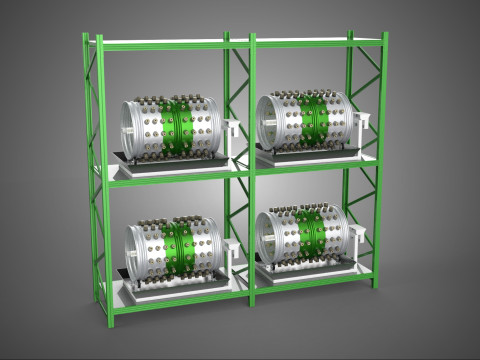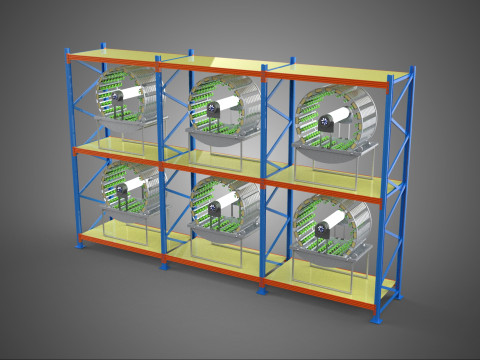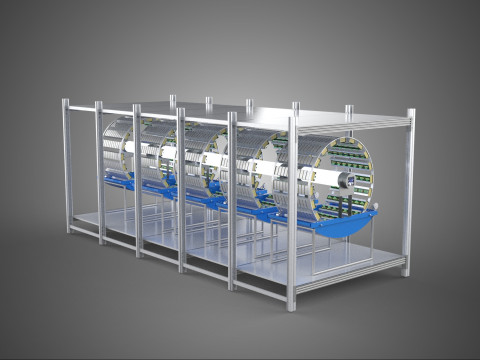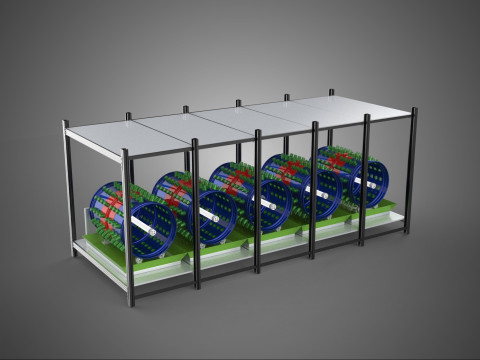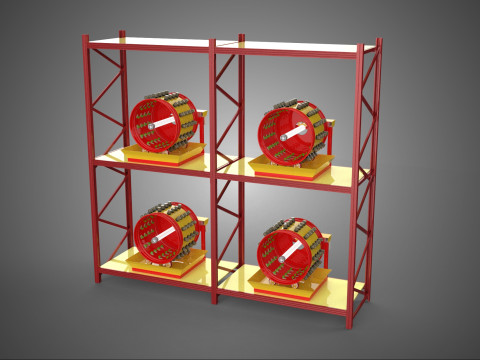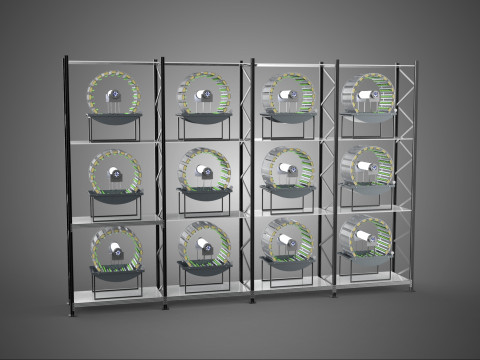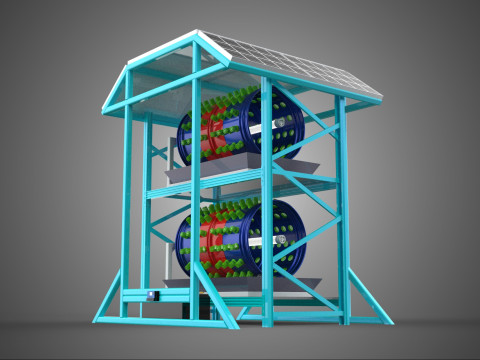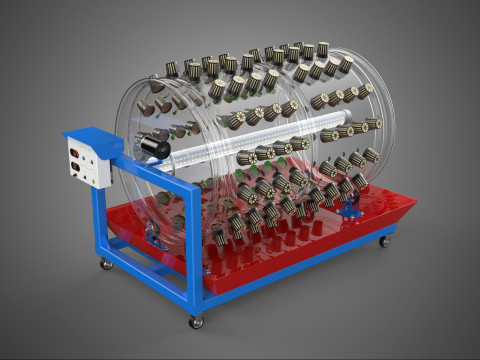ARRAY ROW SHELF RACK TRAY ROTARY HYDROPONIC PLANT GARDEN TOWER 3D Модель
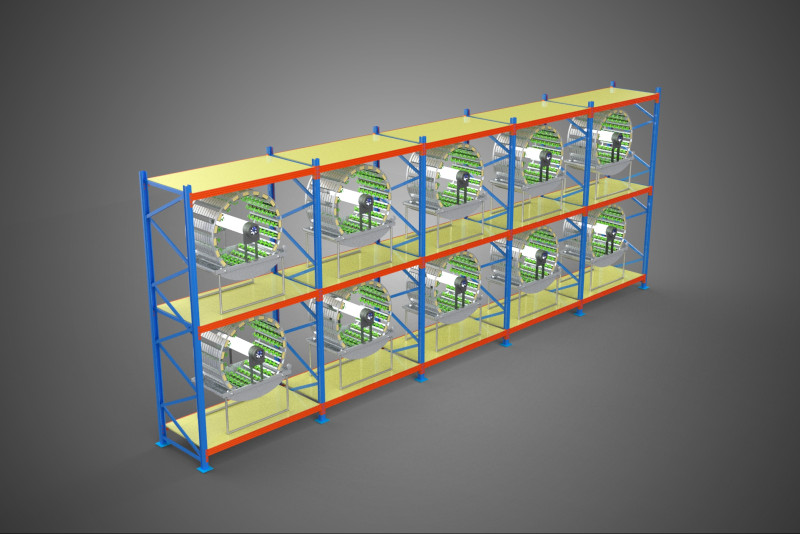
- Доступні формати: IGES (.iges) 5.92 MBRhinoceros (.3dm) 10.99 MB3D Studio (.3ds) 80.30 MBAutodesk AutoCAD (.dwg) 49.20 MBGLB (.glb / .gltf) 97.74 MBBlender3D (.blend) 246.22 MBAutodesk 3DS MAX (.max) 371.90 MBAutodesk FBX (.fbx) 437.53 MBWavefront OBJ (.obj) 302.35 MBACIS(.sat) 86.00 MBSketchUp (.skp) 4.41 MBSTEP (.step) 6.32 MBStereolithography (.stl) 315.87 MBCollada (.dae) 325.92 MB
- Полігони:19894327
- Вершини:13076864
- Анімована:No
- Текстури:No
- Скелет:No
- Матеріали:
- Лоу-полі:No
- Колекція:No
- UVW зображення:No
- Плагіни:No
- Готовність до друку:No
- 3D Скан:No
- Зміст для дорослих:No
- PBR:No
- ШІ Навчання:No
- Геометрія:Poly NURBS
- Розгорнуті UVs:Unknown
- Перегляди:166
- Дата: 2025-10-01
- ID Товару:602543
High-quality 3D assets at affordable prices — trusted by designers, engineers, and creators worldwide. Made with care to be versatile, accessible, and ready for your pipeline.
Included File Formats
This model is provided in 14 widely supported formats, ensuring maximum compatibility:
• - FBX (.fbx) – Standard format for most 3D software and pipelines
• - OBJ + MTL (.obj, .mtl) – Wavefront format, widely used and compatible
• - STL (.stl) – Exported mesh geometry; may be suitable for 3D printing with adjustments
• - STEP (.step, .stp) – CAD format using NURBS surfaces
• - IGES (.iges, .igs) – Common format for CAD/CAM and engineering workflows (NURBS)
• - SAT (.sat) – ACIS solid model format (NURBS)
• - DAE (.dae) – Collada format for 3D applications and animations
• - glTF (.glb) – Modern, lightweight format for web, AR, and real-time engines
• - 3DS (.3ds) – Legacy format with broad software support
• - 3ds Max (.max) – Provided for 3ds Max users
• - Blender (.blend) – Provided for Blender users
• - SketchUp (.skp) – Compatible with all SketchUp versions
• - AutoCAD (.dwg) – Suitable for technical and architectural workflows
• - Rhino (.3dm) – Provided for Rhino users
Model Info
• - All files are checked and tested for integrity and correct content
• - Geometry uses real-world scale; model resolution varies depending on the product (high or low poly)
• • - Scene setup and mesh structure may vary depending on model complexity
• - Rendered using Luxion KeyShot
• - Affordable price with professional detailing
Buy with confidence. Quality and compatibility guaranteed.
If you have any questions about the file formats, feel free to send us a message — we're happy to assist you!
Sincerely,
SURF3D
Trusted source for professional and affordable 3D models.
More Information About 3D Model :
A Rotary Hydroponic Plant Garden Tower, often described through its structural and functional attributes such as "ARRAY ROW SHELF RACK TRAY ROTARY HYDROPONIC PLANT GARDEN TOWER," represents an advanced form of vertical farming. This sophisticated system integrates soilless cultivation techniques with a kinetic, multi-tiered structure designed to optimize plant growth in confined or controlled environments.
**Nomenclature and Concept:**
The lengthy title precisely describes the system's inherent features:
* **Array Row Shelf Rack Tray:** Refers to the modular, often stacked, physical components that hold individual plants or growing media. These can be arranged in rows or an array, supported by shelves or racks, often comprising individual trays or pots.
* **Rotary:** Denotes the kinetic aspect, indicating that the entire assembly or segments of it undergo slow, continuous rotation.
* **Hydroponic:** Specifies the cultivation method, which involves growing plants without soil, using nutrient-rich water solutions delivered directly to the root zone.
* **Plant Garden Tower:** Describes the overall vertical form factor and its purpose as a system for cultivating plants.
**Core Components and Operational Principles:**
1. **Vertical Structure (Tower):** The fundamental design prioritizes verticality, enabling a high density of plants within a minimal footprint. This tower typically features a central axis or frame around which plant-holding modules are organized, maximizing cubic space utilization.
2. **Rotary Mechanism:** This is a defining characteristic. An electrically driven motor and gearing system facilitate the slow, continuous rotation of the entire array of plant shelves, trays, or individual plant sites.
* **Purpose:** The primary benefit of rotation is to ensure uniform exposure of all plants to a centralized or external light source (e.g., LED grow lights or natural sunlight). This kinetic movement prevents shading, promotes even growth, and can enhance air circulation and nutrient uptake across all plant positions.
* **Mechanism:** Rotational speeds are typically very low (e.g., one revolution per hour or per day) to conserve energy while achieving equitable resource distribution.
3. **Hydroponic System:** The tower employs hydroponics for nutrient delivery.
* **Nutrient Delivery:** A reservoir, typically located at the base, stores a precisely formulated nutrient solution. A submersible pump circulates this solution. Depending on the design, techniques such as Nutrient Film Technique (NFT), Deep Water Culture (DWC) for individual plant sites, or various drip irrigation methods are integrated. Often, the solution is pumped to the top of the tower and then gravity-fed downwards, irrigating each level as it cascades or flows.
* **Aeration:** Essential for root respiration, the nutrient solution in the reservoir is typically oxygenated using an air pump and air stone.
4. **Plant Holding Structure (Array, Row, Shelf, Rack, Tray):** These are the modular units that house the plants.
* **Design:** These units are commonly arranged cylindrically or helically around the central rotating shaft. They feature designated sites (cups, pockets, or trays) where plants are secured, often in net pots with inert growing media like rockwool or coco coir, allowing roots to access the circulating nutrient solution.
* **Materials:** Constructed from durable, food-grade, and UV-stabilized materials such as PVC, ABS plastic, or stainless steel to ensure longevity, hygiene, and prevent chemical leaching.
* **Modularity:** The design frequently incorporates modular elements, allowing for scalability, ease of assembly, maintenance, and replacement of individual sections.
5. **Lighting System:** For indoor cultivation or supplemental lighting, integrated LED grow lights are commonly positioned centrally within the tower or around its periphery. The rotation ensures that all plants receive an optimal and consistent light dose over their growth cycle.
**Advantages:**
* **Space Efficiency:** Maximizes crop production in limited areas, making it ideal for urban agriculture and indoor farming.
* **Water Conservation:** Hydroponic systems recirculate water, reducing consumption by up to 90% compared to traditional soil-based agriculture.
* **Accelerated Growth and Yield:** Precise control over nutrients, light, and environmental parameters often leads to faster growth rates and increased yields.
* **Uniform Plant Development:** The rotary mechanism ensures equitable light and air exposure, resulting in more consistent plant size, maturity, and quality across the entire crop.
* **Reduced Pests and Diseases:** Cultivation in a controlled indoor environment significantly lowers the incidence of pests and plant pathogens, often eliminating the need for pesticides.
* **Year-Round Production:** Enables cultivation independent of external climate, seasons, or weather conditions.
* **Ergonomics and Automation Potential:** Designs can be optimized for ease of harvesting and maintenance, with capabilities for integration with advanced automation for nutrient dosing, pH regulation, and environmental monitoring.
* **Local Food Production:** Supports hyper-local food systems, reducing transportation costs, carbon footprint, and enhancing food security.
**Applications:**
Rotary Hydroponic Plant Garden Towers are deployed in a variety of settings, including commercial vertical farms, research and development facilities, educational institutions, urban farming initiatives, and residential home gardening. They are particularly effective for growing leafy greens (e.g., lettuce, spinach, kale), culinary herbs, strawberries, and other small-to-medium sized crops.
**Conclusion:**
The Rotary Hydroponic Plant Garden Tower represents a significant innovation in controlled environment agriculture, seamlessly blending mechanical engineering with horticultural science.
Якщо вам потрібен інший формат, будь ласка, зробіть запит за допомогою тікета підтримки. Ми можемо конвертувати 3D моделі: .stl, .c4d, .obj, .fbx, .ma/.mb, .3ds, .3dm, .dxf/.dwg, .max. .blend, .skp, .glb. Ми не конвертуємо 3d сцени і такі формати, як .step, .iges, .stp, .sldprt тощо!
ARRAY ROW SHELF RACK TRAY ROTARY HYDROPONIC PLANT GARDEN TOWER 3D Модель iges, 3dm, 3ds, dwg, glb, blend, max, fbx, obj, sat, skp, step, stl, dae, від surf3d
vertical soilless aeroponics hydroponics horticulture aquaculture hydroculture aeroponic hydroponic structure frame farm greenhouse agriculture farming vegetable fruit circular radial rotatingARRAY ROW SHELF RACK TRAY ROTARY HYDROPONIC PLANT GARDEN TOWER - You can use this royalty-free 3D model for both personal and commercial purposes in accordance with the Basic or Extended License.
The Basic License covers most standard use cases, including digital advertisements, design and visualization projects, business social media accounts, native apps, web apps, video games, and physical or digital end products (both free and sold).
The Extended License includes all rights granted under the Basic License, with no usage limitations, and allows the 3D model to be used in unlimited commercial projects under Royalty-Free terms.


 English
English Español
Español Deutsch
Deutsch 日本語
日本語 Polska
Polska Français
Français 中國
中國 한국의
한국의 Українська
Українська Italiano
Italiano Nederlands
Nederlands Türkçe
Türkçe Português
Português Bahasa Indonesia
Bahasa Indonesia Русский
Русский हिंदी
हिंदी